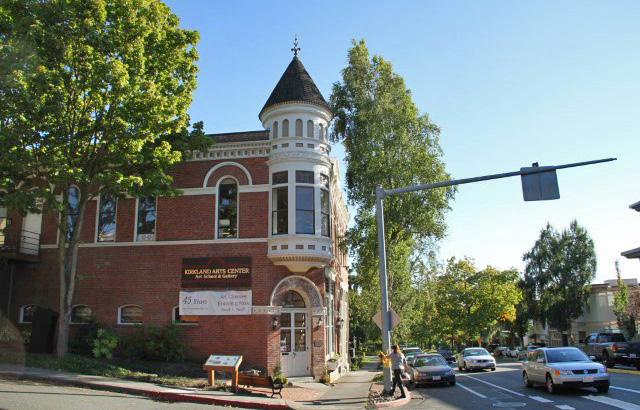3. HISTORICAL CONTEXT
Prior to the 1800s, the First Peoples of the Duwamish Tahb-tah-byook tribe inhabited the Lake Washington shoreline from Juanita Bay to Yarrow Bay, as described in more detail in the Community Character Chapter of the Comprehensive Plan. Lake Washington offered an abundance of riches, including wapatoes (a wetland tuber), tules, cedar roots, salmon, waterfowl, berries, deer, muskrat, beaver and otter. The 1855 Treaty of Point Elliott guaranteed hunting and fishing rights and reservations to all Tribes represented by the Native signers, including the Duwamish People. In return for the reservation and other benefits promised in the treaty by the United States government, the Duwamish People exchanged over 54,000 acres of its homeland. Today those 54,000 acres encompass much of present-day King County, including Kirkland (and the Market and Norkirk Neighborhoods). Unfortunately, the opening of the Lake Washington Ship Canal in the early 1900s also had a detrimental effect on the Duwamish People, lowering the level of the lake, affecting wetlands, and diminishing traditional food sources.
The historic buildings dating from the 1890s at the intersection of Market Street and 7th Avenue represent the original town center and are still a focal point for Kirkland’s history. This historic district reflects the City’s past and its continued evolution through its old and new buildings and its streetscape, including street trees, public seating and street lights.
Between 1888 and 1890, Peter Kirk’s Kirkland Land and Improvement Company purchased much of the land that had been homesteaded in the 1870s to begin the proposed new city. This new city was to support the construction of the steel mill on Rose Hill near Forbes Lake. The new town center was at the intersection of Market Street and Piccadilly, which is now 7th Avenue. This intersection, with four nearby remaining 1891 brick buildings, three of which are on the National Register of Historic Places, is one of the most historically significant in Kirkland. An alternative street plan was also developed which included a large square at this intersection and a hotel on what is now Heritage Park at the corner of Market Street and Waverly Way. The cluster of historic properties at the intersection of Market Street and 7th Avenue forms an important historical link and entrance to both the Market and Norkirk Neighborhoods. See the Market and Norkirk Neighborhood Plans for more historical information about the area.
Policy MS-1:
Encourage preservation of structures and locations that reflect Kirkland’s heritage.
The Community Character Element Chapter of the Comprehensive Plan Table CC-1 identifies Designated Historic Buildings, Structures, Sites and Objects in Kirkland designated by the Kirkland Landmark Commission and King County Landmark Commission. Figure CC-1 identifies the locations of those resources. Refer to those tables for more information about the historic features along the corridor and in the Market and Norkirk Neighborhoods. Figure MS-3 shows the location of the historic features along the corridor. Attention must also be given to landmarks and locations that can help illustrate the history of the area prior to white settlement.
Policy MS-2:
Provide incentives to encourage retention of identified buildings of historic significance.
The City should include incentives in the Zoning and Building Codes for maintenance of the historic buildings at the 7th Avenue and Market Street Historic District. These incentives can help to make the maintenance of the historic structures more economically viable.
Policy MS-3:
Provide and maintain markers and interpretive information for the historic sites located in the historic district at 7th Avenue and Market Street.
Providing this information will identify these important sites and enable future community members to have a link with the history of this significant area of Kirkland. Attention should be given to celebrating the neighborhood’s history in an inclusive way, to help residents and visitors understand the history of the area prior to white settlement. 
The Peter Kirk Building at 620 Market Street


